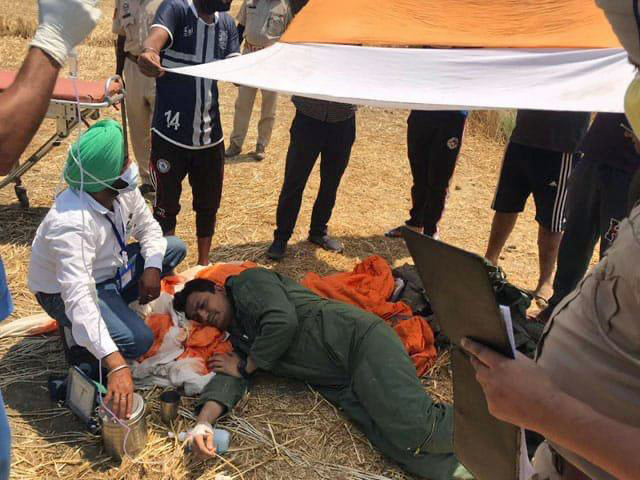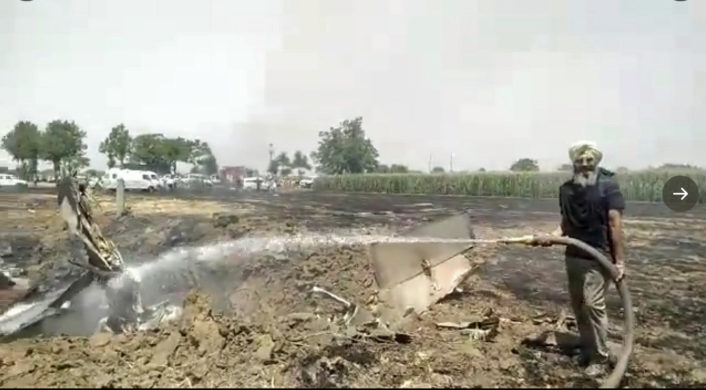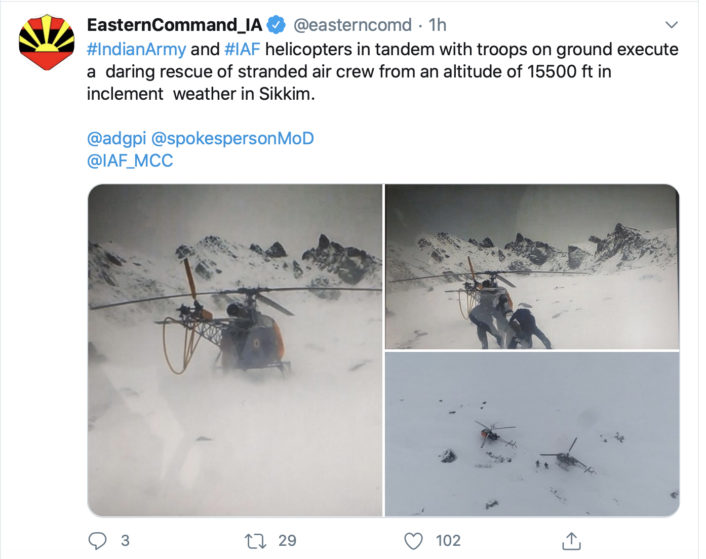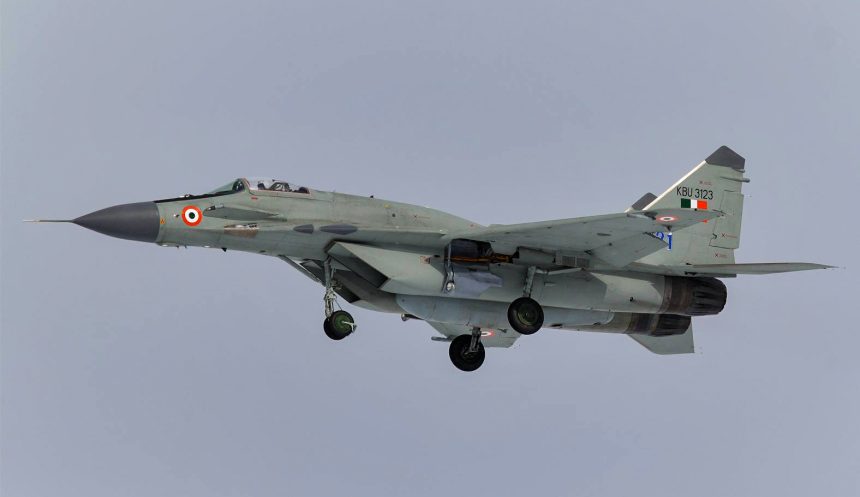Aircraft on Training Mission Experienced “Technical Snag”, Second Emergency in 22 Days.
An Indian Air Force MiG-29UPG crashed at approximately 10:30 AM local time (0500 GMT), Friday, May 8, 2020 near Chuharpur Village, Punjab, India. The single crewmember ejected safely and was photographed lying in a field with bystanders rendering aid. His medical condition is unknown although some local news and social media outlets reported that he may not be seriously injured.
The cause of the crash is unknown, the Indian Air Force is conducting an accident investigation.
Today’s MiG-29UPG accident comes the day after an Indian Air Force Mi-17 helicopter on a routine maintenance flight from Chaten to Mukutang in Sikkim made a forced landing on Wednesday morning, May, 6, 2020.
A report published in TheHindu.com quoted Indian Air Force sources as saying, “The helicopter got airborne at 6.45 a.m. and en route, the helicopter force landed 10 NM short of designated helipad due to bad weather”. The report went on to say that, “While the helicopter has sustained damage, all six personnel on board — four IAF aircrew and two Army personnel — are reported to be safe.” A conflicting report in Indian media listed one injury from the incident.

These two accidents for India come 22 days after a less serious incident when an Indian AH-64E Apache attack helicopter made an emergency landing in a field in Punjab after flying from Pathankot Army Base. Some observers speculated that a contributing factor to the emergency may have been an intake cover that was left on the helicopter, but this was not confirmed.

Prior to today’s crash of the MiG-29, the Indian Air Force has a long and successful history with the dependable, economical and combat proven MiG-29 multi-role combat aircraft. India was the first country outside Russia to import the MiG-29, with an initial purchase of 66 aircraft being placed in 1980 during development. Indian MiG-29s first saw combat in the 1999 conflict in Kashmir. Since their initial acquisition, the Indian MiG-29 fleet has been extensively upgraded with new RD-33 Series 3 engines on some aircraft. Interestingly, the Israel Aircraft Industries (IAI) is one contractor providing avionics and weapons system upgrades on the most recent upgrade of India’s MiG-29s.
In March 2009, a structural problem with some MiG-29s was discovered in the tail area, but no Indian aircraft suffered accidents and the investigation by MiG in Russia resolved the problem. The Indian Navy also employs a carrier variant of the MiG-29 for shipboard service on their aircraft carrier, the INS Vikrant.
In contrast to India’s unfortunate loss of a MiG-29 today and their recent helicopter incidents, a dramatic high-altitude helicopter rescue unfolded in the mountainous Sikkim state of northeastern India. Photos shared on Twitter and later appearing in Indian media reports showed two high altitude helicopters on a glaciated area at high altitude 15,500 feet above sea level.
India’s Zee News reported that, “In a major breakthrough, Indian Army and Indian Air Force (IAF) helicopters on Friday executed a daring rescue and evacuation of a stranded crew of the IAF helicopters and air dispatch crew at an altitude of 15,500 feet above sea level amidst inclement weather.” The report continued to say, “The rescue and evacuation teams comprising–Army and Air Force helicopters reached the high-altitude emergency landing site at North Sikkim braving snow blizzards to evacuate four IAF crew and Air Dispatch personnel.” There was no mention in the report of how the first helicopter became stranded at high altitude. India’s rotary wing assets are well known for their ability to operate at extreme altitude in the country’s northern, mountainous region.










